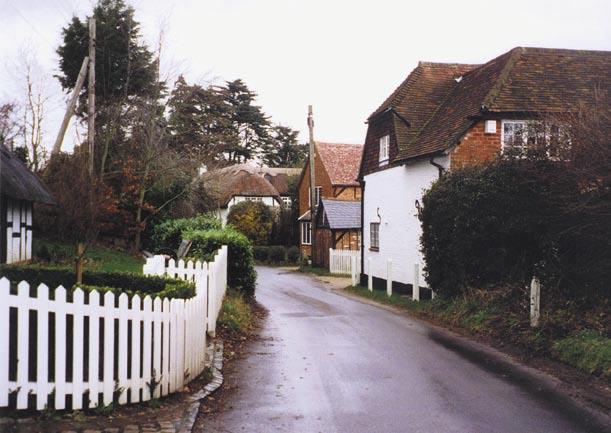The building of timber-framed houses on copyhold tenancies

Mapledurwell and Up Nately in Hampshire are rich in timber-framed houses of the late 16th and early 17th centuries, a period named The Great Rebuilding by W.G. Hoskins. A rare combination of documentary sources survives for both parishes and suggests that they are historical models for other communities in the county and possibly elsewhere.
Mapledurwell formerly belonged to Corpus Christi College Oxford, and was the manor of the same name, while copyholds in next-door Up Nately were part of Winchester College’s manor of Andwell. In each case, the manorial court books are extant. Furthermore, accurate 17th- and 18th- century estate maps and surveys record the names of tenants and their holdings in both parishes. From these sources, manorial copyholds and their houses have been identified and tables compiled to show the succession of tenants.
The houses were well-built and fairly expensive in their time. In view of the low fixed rents and fines then paid according to the custom of the manor, it is inconceivable that they should have been built by the lords for their tenants. The custom of the manor also ensured security of tenure, and it was not unusual for a copyhold to be held by one family for 200 years or more.
A population explosion in the 16th centuries, after the decimation of the Black Death, greatly inflated food prices while land rents remained low. A third documentary source, the inventories accompanying copyholders’ wills, shows that the tenants were quite affluent at this time, implying that large profits were being made. Amalgamation of copyholds had also taken place.
Moreover, it was possible for copyhold succession to be manipulated, with little benefit to the lord. Occasional notes in the court records show that surrendering copyholders in Mapledurwell and Up Nately had been paid large amounts of money by the new tenants for the transfer of their rights, sums that would more than recoup the cost of building a house.
It would normally be unusual for a tenant to build a high-quality house on a landlord’s land. However, given the prospect of security of long-term tenure combined with high profits and the ultimate opportunity for him or his descendants to recoup the outlay, it is clear that several copyholders decided to display their wealth by building such houses at their own cost.
